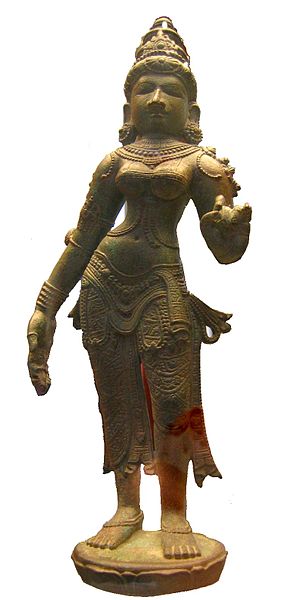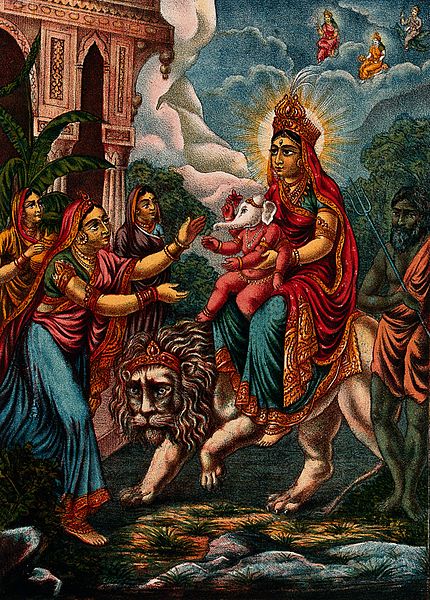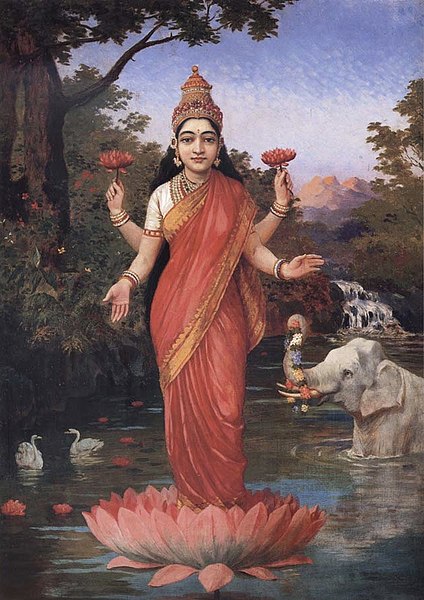Matrikas (Sanskrit: मातृका (singular), IAST: mātṝkā, lit. "mothers") also called Matar or Matri, are a group of mother goddesses who are always depicted together in Hinduism. The Matrikas are often depicted in a group of seven, the Saptamatrika(s) (Seven Mothers). However, they are also depicted as a group of eight, the Ashtamatrika(s). In the Brihat Samhita, Varahamihira says that "Mothers are to be made with cognizance of (different major Hindu) gods corresponding to their names." They are associated with these gods as their spouses or their energies (Shaktis). Brahmani emerged from Brahma, Vaishnavi from Vishnu, Maheshvari from Shiva, Indrani from Indra, Kaumari from Kartikeya, Varahi from Varaha and Chamunda from Chandi. and additionals are Narasimhi from Narasimha and Vinayaki from Ganesha.
Varahi, one of the Matrikas
The Goddess Ambika (identified with Durga or Chandi) leading the EIGHT Matrikas in battle (top row, from the left) Narasimhi, Vaishnavi, Kaumari, Maheshvari, Brahmani. (bottom row, from left) Varahi, Indrani and Chamunda or Kali against the rakshasa Raktabīja. A Folio from a Devi Mahatmya.
9th–10th century granite Chola statue of Matrika Maheshvari, seen with a trident in a hand, adorned by serpent ornaments and her vahana (mount), the bull Nandi is seen on her seat — Musée Guimet, Paris.
A Hoysala sculpture of Chamunda, Halebidu. Surrounded by skeletons, the goddess has large nails and protruding teeth and wears a garland of skulls.
Devī is the Sanskrit word for 'goddess'; the masculine form is deva. Devi and deva mean 'heavenly, divine, anything of excellence', and are also gender-specific terms for a deity in Hinduism.
A sculpture of the goddess Lakshmi
Parvati riding a lion with her son Ganesha
Lakshmi
Image of goddess Saraswati








